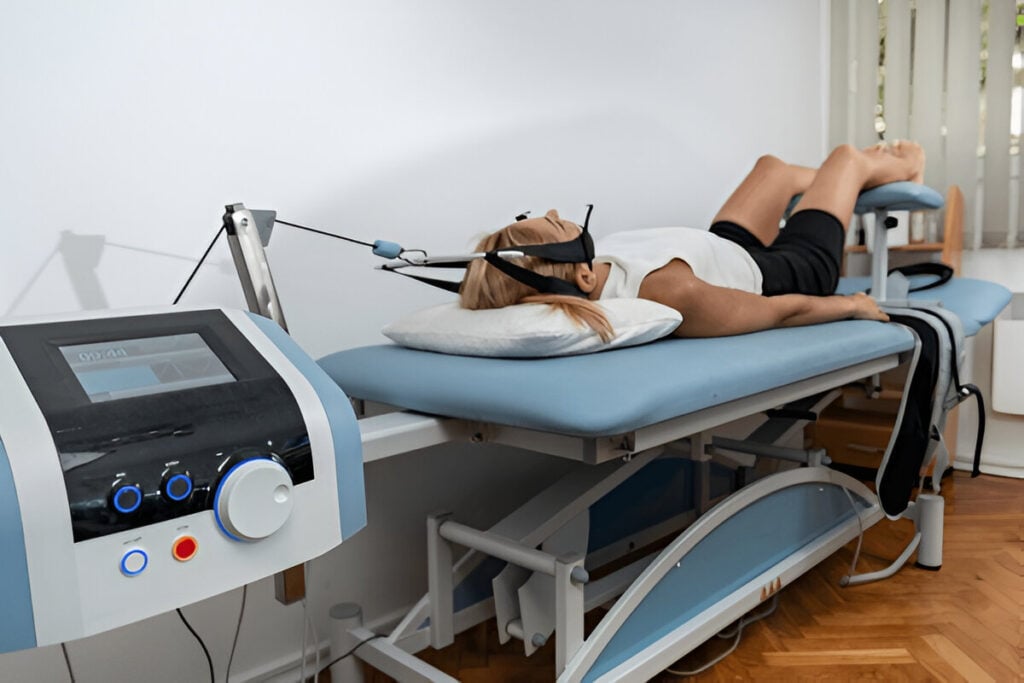
Traction Therapy
At Pramukh Advance Physiotherapy Center, we are dedicated to providing targeted, non-invasive treatments for spinal pain and disc-related conditions. One of the highly effective methods we offer is Traction Therapy, a trusted technique used to relieve pressure on the spine and promote natural healing.
What is Traction Therapy?
Traction Therapy is a form of mechanical decompression used in physiotherapy to stretch and relieve pressure from the spine. By gently pulling the vertebrae apart, traction helps reduce compression on spinal discs and nerves, which often causes back and neck pain.
This technique is especially effective in alleviating pain caused by herniated discs, sciatica, and degenerative disc conditions.
How Traction Therapy Works
Traction can be applied manually or with the help of specialized equipment, depending on the patient's condition. The therapy gently stretches the spine, increasing space between the vertebrae. This:
- Relieves pressure on spinal discs and nerves
- Promotes better circulation and nutrient flow
- Reduces pain and inflammation
- Enhances spinal alignment and flexibility
Conditions Treated with Traction Therapy
At our Maninagar center, Traction Therapy is commonly used to treat:
- Cervical and lumbar spondylosis
- Herniated or slipped discs
- Sciatica and pinched nerves
- Degenerative disc disease
- Facet joint dysfunction
- Spinal stenosis
- Chronic neck and lower back pain
Free ask question?
Yes, when done under professional supervision, traction is generally safe. Your therapist will assess your condition to determine if you’re a suitable candidate for this treatment.
No, it should not hurt. You may feel a stretching or pulling sensation, but it should be gentle and comfortable. Let your therapist know if you feel any discomfort during the session.
A typical session lasts between 10 to 30 minutes, depending on the condition and the type of traction used (manual or mechanical).
This depends on your diagnosis and how your body responds. Some people experience relief after just a few sessions, while others may need ongoing therapy over several weeks.
Yes, traction is often part of a broader physiotherapy plan that includes exercises, manual therapy, heat/cold therapy, and modalities like IFT or ultrasound.

